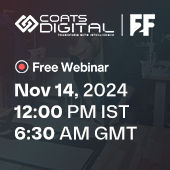Not every fashion designer can be a famous celebrity, but if you manage your business right, even a mass market ready-to-wear brand can position itself to succeed, says Supriya Ghurye, owner and founder of Fuel4Fashion, a design and brand consultancy working with growing fashion brands.
Thousands of fashion design graduates step out of design school every year with dreams to launch the next popular fashion brand and make it big like Marc Jacobs, Rebecca Minkoff, Prabul Gurung or Manish Arora. But few make it to that celebrity stage. Many start their own couture brand only to give it up a few seasons later as the challenges of successfully growing a business overwhelm them.
Yet hundreds of designers make the transition to entrepreneur, successfully taking their brand to the broader audience beyond couture. While a ready-to-wear brand may not have the same glamour quotient as a couture brand, many of these, such as Zara, Global Desi and Forever 21, have cultivated a profitable presence and retain a unique position in the minds of customers. The online space also offers an opportunity to create a successful fashion brand for the larger audience.
So what does it take to make a brand successful in the retail space? Here are a few key points:
Design thinking: The first step is of course in the orientation of the designer in creating designs. While couture is focused on creating designs that are unique, that stand out from the crowd and express the soul of the designer, the path to successful retail brands lies in the ability to understand the mind of the consumer and the feasibility of the price point.
Consumer research: Define your target audience well and understand what it likes. Create a typical customer profile which you would like to buy your brand. What does he or she like - food, music, environment? This is called creating a buyer persona. Knowing your buyer persona is critical to being able to meet their expectations in the kind of clothes they would like to wear. The closer understanding you have of the buyer, the better can you design for them.
Create something unique: Your designs should have something about them that makes them memorable, whether it is the style, the colour, or any other element. These unique elements will define your brand's identity and make it distinctive. Remember, your customers too want to be seen wearing something memorable.
Manage your production costs: Another important aspect is the ability to get the production cost to sales equation right, and factoring in all possible elements, such as the cost of discounting at the end of season. Production cost has to be factored in at the time of design to ensure that your final product fits into the price segment that you decided on. Also, while sourcing, remember that if you are manufacturing in small volumes initially, you are not likely to get much of a discount. Repeat orders or subsequent collections will give vendors the confidence that you are there to stay, and they will offer you better terms.
Build
your collection around your budget: While designing, keep in mind
that your budget not only revolves around the production cost, but also the
cost of sales, marketing, packaging, shipping, discount and promotion. Knowing
what you can spend will help you create a collection that generates a profit
when sold. It is better to start small with a collection of 8-10 designs in
volumes that are easy to sell than opting for an elaborate collection and be
saddled with inventory for a long time, which will cost you to store and which
you may ultimately have to give away at a hefty discount.
Get
feedback early on: In the early stages of your brand, you can display your
designs to a set of your target audience and get their response. Then you can
produce those designs that are the most popular. If your audience like the
designs, you can always ask them to pre-book through your website, giving you
some upfront working capital. That way, you have a double benefit - firm orders
for your products and cash flow to help manufacture them.
Follow
up:
Get periodic feedback from your customers about your designs and try to
understand their likes and dislikes. Incorporate that feedback in subsequent
designs and be sure to thank customers for their feedback in some way. This
will make sure they stay connected and turn loyal repeat buyers.
(Image courtesy Gary Bigeni, MBFW Australia, 2012. Photo by Eva Rinaldi)





20240924091633.png)






Comments